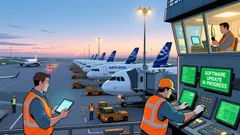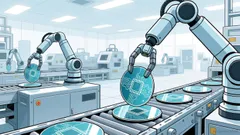AInvest Newsletter
Daily stocks & crypto headlines, free to your inbox
Recent attention has been drawn to the rapidly growing humanoid robot industry, with major players like
, Unitree, and Figure AI leading the charge. Unitree Technology's founder, Wang Xingxing, has become an influential figure in the sector, even personally endorsing their G1 humanoid robot. He recently took to social media to showcase advancements like the robot’s 720-degree spinning kick, emphasizing the evolution of robots driven by AI. Despite these developments, market analysts, including those from major , remain skeptical about the immediate practicality of humanoid robots in real-world applications.While Unitree’s robots continue to unlock a variety of new skills, such as dance and martial arts, experts argue that the technology still has some way to go before it can be commonplace in everyday environments. This sentiment is echoed in recent market evaluations suggesting that humanoid robots are not yet ready to handle complex and precise tasks. As of now, Unitree's sales mainly cater to academic and training needs, with wider commercial applications predicted to unfold over the next decade.
Beyond their technical prowess, Unitree’s humanoid robots have captivated public interest, partly due to Wang Xingxing's strategic media presence. His engagement highlights a trend where tech entrepreneurs build personal brands to increase company visibility and product recognition, exemplifying a shift in how technology is marketed in the digital age.
Market projections show that while the humanoid robot sector is poised for growth, it faces challenges such as the need for improved training algorithms and more efficient hardware components. Technological breakthroughs, particularly in AI integration and battery longevity, will be crucial to achieving widespread commercial use. These challenges notwithstanding, the advancing capabilities of humanoid robots point toward a future where they become integral within industries ranging from service to industrial operations.
Overall, the humanoid robot market, driven by companies like Unitree, Tesla, and Figure AI, represents a frontier of innovation that promises to redefine automation and human-technology interaction. However, the path forward will require addressing technological and logistical hurdles before humanoid robots can become everyday fixtures in our lives.

Stay ahead with real-time Wall Street scoops.

Nov.30 2025

Nov.30 2025

Nov.29 2025

Nov.29 2025

Nov.29 2025
Daily stocks & crypto headlines, free to your inbox
Comments
No comments yet